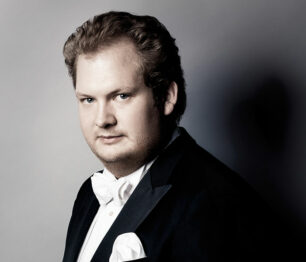In 1946, a new creation by George Balanchine was performed in New York for the inaugural evening of the Ballet Society – which a few years later became New York City Ballet. The reputation of this former ballet master from Diaghilev’s Ballets Russes was well established on the other side of the Atlantic: he had already collaborated with Broadway and several U.S. companies, and had become an American citizen in 1939. In the Big Apple, he was able to continue developing his style, marked by a particular interest in tempo and space. For The Four Temperaments, Balanchine used music by Paul Hindemith. At the time, Hindemith was already well known to choreographers and the public alike, having composed music for ballets by Léonide Massine and Martha Graham. His sense of rhythm lends itself to movement. But it was for his own personal pleasure that Balanchine had initially commissioned him to write a work for piano, which he intended to play for his friends in a private setting. However, this solidly structured music (a theme followed by four variations) eventually inspired the choreographer to write a ballet.
Balanchine structures his work according to the four moods that define man, as established by Hippocrates in Antiquity: melancholic, sanguine, phlegmatic, choleric. Far from studying expressions and feelings, Balanchine uses these four moods as states of the body. The rigorous, elegant choreography demands solid technique from the dancers, whose clean lines are underlined by black leotards for the women and black tights for the men. Balanchine continued his exploration of the neo-classical style: the stage was uncluttered, allowing us to admire portés, arabesques, grands battements, leaps and pointes figures in their raw state. But he added an experimental touch by exploring elbow angles, shifted hips and side steps (reminiscent of figures in Egyptian bas-reliefs) without following a narrative framework. This ballet by the man nicknamed “Mister B.” continues to be regularly danced by the world’s leading companies, and has already been performed many times by Les Ballets de Monte-Carlo.
Internationally acclaimed Ukrainian dancer and choreographer Alexei Ratmansky follows in the steps of George Balanchine in his use of space and music. A former director of the Bolshoi and the American Ballet Theatre, he has been choreographing for over twenty-five years in the classical tradition, and has made a name for himself by updating the great historical ballets. Passionate about dance history and deeply attached to his country, he imagined Wartime Elegy in 2022 for the Pacific Northwest Ballet, in which he conveys what the Ukrainian people are going through today in wartime. Set to popular music and vibrant compositions by Valentin Silvestrov, the dancers leap and twirl in traditional costumes. The choreographer also drew on the pictorial works of Ukrainian artists: the colorful paintings by Maria Prymachenko and the darker, abstract works of Matvei Vaisberg. Despite the heavy context, the ballet is not lacking in liveliness and joy. The solidarity and optimism of the Ukrainian people shine through in some particularly rousing passages. The choreographer’s blend of character dance and rhythmic or fluid group movements with lyrical arms creates a strikingly topical picture.
In a completely different style, German choreographer Marco Goecke returns to Les Ballets de Monte-Carlo for a world premiere: Verklärte Nacht (The Transfigured Night). The choreographer is no stranger to the company, having already composed Le Spectre de la Rose for them in 2009. Marco Goecke is a meticulous choreographer who draws total energy from his dancers, mobilising every part of their bodies. He leaves aside academic lines and pointes to focus on head, finger and face work. Mouths distort, hands tremble in jerky, precise movements: his aesthetics may recall Arnold Schoenberg’s contemporary Expressionism. Written in 1899 by the Viennese composer for string sextet, The Transfigured Night is inspired by Richard Dehmel’s poem of the same name which depicts the moonlit walk of a couple in love. During this walk, the woman reveals to her lover that she is carrying another man’s child. Marco Goecke, who likes to work with light and shadow in his pieces, has chosen music with the colors of a dimly lit night. But Schoenberg’s music refers above all to the moods of the two protagonists, using dissonant counterpoint for the most tortured moments. The ambivalence of the different mental and physical states is reflected in the music as well as in the dancers’ movements – echoing in some way the dynamics of the Four Temperaments.
Iris Régnier





